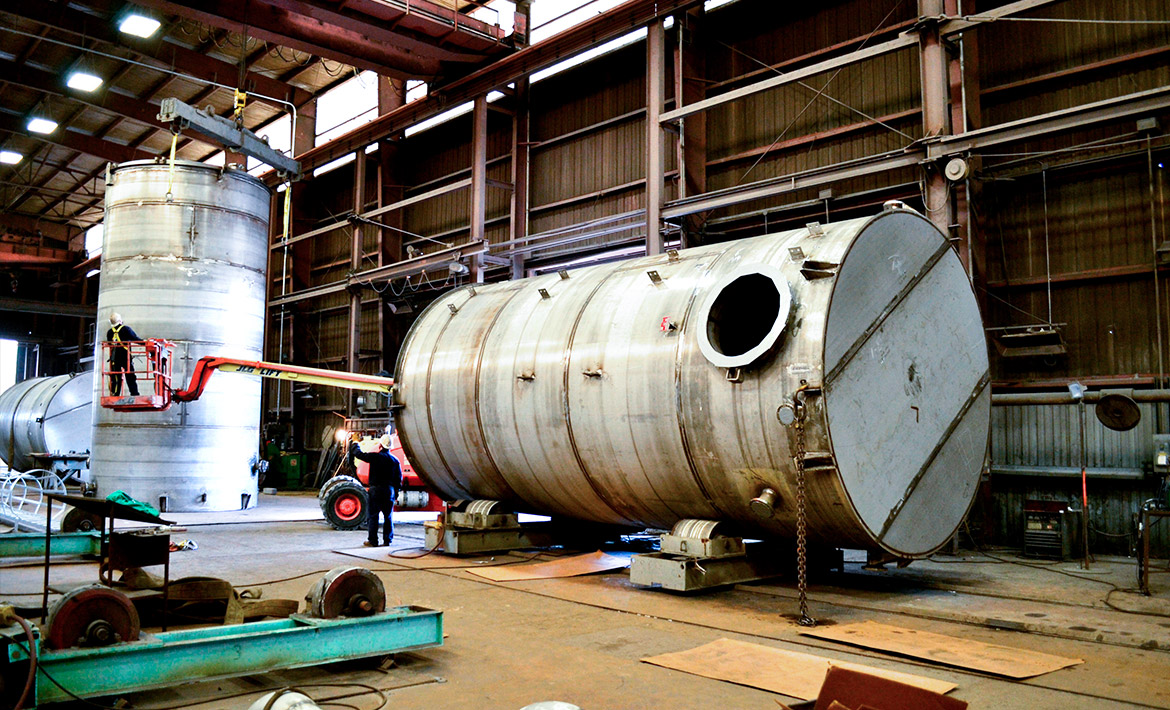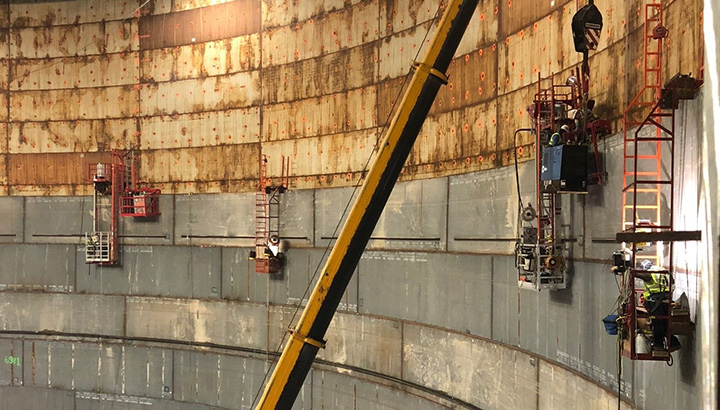How Welding Inspection Functions: A Comprehensive Guide for Professionals
Welding inspection plays a crucial duty in making certain the security and integrity of welded frameworks. It includes an organized strategy that includes both aesthetic assessment and advanced screening methods. Specialists need to acquaint themselves with crucial criteria and laws governing the sector. Recognizing the common problems that can emerge during welding is essential. This overview will discover these components carefully, offering insights right into the procedures that support top quality and integrity in welding.
Understanding the Importance of Welding Inspection
While several may undervalue the value of welding evaluation, it plays a vital function in making certain the honesty and security of welded structures. Efficient welding assessment determines prospective flaws and imperfections that can endanger architectural toughness and result in disastrous failures. The evaluation procedure includes different methods, such as visual evaluations, ultrasonic screening, and radiographic evaluations, each adding to the overall analysis of weld high quality.
Along with protecting the architectural honesty, welding assessment guarantees compliance with sector criteria and client requirements. By making sure that welds meet needed features and resistances, assessments aid maintain the dependability and durability of components in different applications, from building to aerospace. An extensive evaluation procedure promotes a society of top quality and liability among producers and welders. Inevitably, welding examination is not merely a procedural step; it is a crucial technique that underpins the safety and security and performance of engineered systems across varied industries.
Trick Criteria and Laws in Welding Examination
The structure of efficient welding assessment hinges on adherence to established policies and criteria. Different organizations, such as the American Welding Society (AWS) and the American National Standards Institute (ANSI), set forth guidelines that ensure top quality and security in welding practices. Trick standards, such as AWS D1.1 for structural welding and ASME Section IX for stress vessels, give extensive requirements for welding credentials, evaluations, and treatments. Governing frameworks, including those from the Occupational Safety and Health Administration (OSHA), required safety and security practices and worker defenses in welding settings. Conformity with these criteria is essential for achieving regular weld quality and minimizing the danger of failures. Additionally, worldwide standards like ISO 3834 better boost worldwide consistency in welding assessment methods. Specialists must remain educated concerning these regulations to guarantee that their examination methods straighten with sector expectations and legal needs, therefore guarding both personnel and structural integrity.
First Prep Work and Aesthetic Inspection Techniques

Efficient welding evaluation starts with a comprehensive pre-inspection list that assures all needed conditions are satisfied before the real inspection takes area. Following this preparation, visual problem recognition plays a vital duty in assessing weld top quality, permitting assessors to detect concerns such as cracks or improper combination. Together, these strategies create the foundation for an effective welding assessment process.
Pre-Inspection Checklist
Before beginning any type of welding examination, a complete pre-inspection list is vital to assure that all essential prep work are completed and that visual assessment methods are successfully employed. Key aspects of this list consist of validating the welding treatment specification (WPS), seeing to it all tools is adjusted and in great working condition, and confirming that the examiner has the needed qualifications. Additionally, it is important to examine any kind of previous inspection records and to assess the work environment for safety and security hazards. The assessor should likewise confirm that all pertinent documentation, such as material certificates and examination documents, is readily offered. Completing this checklist helps to establish a strong structure for a successful evaluation process, boosting the integrity of the results obtained.
Aesthetic Flaw Identification
An effective aesthetic problem identification process begins with careful initial preparation and the application of well-known aesthetic evaluation methods. Assessors must ensure that the welding area is clean and well-lit, as appropriate visibility is crucial for discovering defects. A thorough exam of the weld joint's surface allows for the recognition of discontinuities, such as fractures, undercuts, or porosity. Inspectors frequently use tools like amplifying glasses or mirrors to improve their sight of hard-to-reach areas. In addition, they must be familiar with the details welding criteria and standards appropriate to the task. By sticking to these techniques, examiners can properly recognize prospective problems, protecting the stability of the weld and compliance with market standards.
Non-Destructive Screening Techniques: An Overview
Non-destructive testing (NDT) techniques play a necessary duty in the welding evaluation procedure by guaranteeing the integrity and dependability of bonded frameworks without causing any damages (API 650 Welding Inspection). These techniques enable examiners to evaluate the top quality of welds while protecting the components being taken a look at. Common NDT methods consist of ultrasonic screening, radiographic screening, magnetic fragment testing, and dye penetrant screening, each offering special advantages
Ultrasonic testing utilizes high-frequency sound waves to find internal imperfections, while radiographic screening utilizes X-rays or gamma rays to picture the interior framework of welds. Magnetic bit testing discloses surface area and near-surface issues by using a magnetic area and iron particles to the weld location. Dye penetrant find out here testing highlights surface-breaking defects with the application of a colored dye. Together, these NDT approaches supply essential insights right into weld high quality, allowing professionals to make educated choices concerning safety and compliance in look at this now welding applications.
Usual Problems and Their Implications
Recognizing usual defects in bonded joints is crucial for preserving architectural stability and safety. Various defects can occur during the welding procedure, each bring possible ramifications for the general performance of the structure. Porosity, identified by tiny gas pockets within the weld, can weaken the joint and jeopardize its load-bearing capacity. Cracks may create because of thermal anxiety or inappropriate cooling, leading to prospective failure under tension. Incomplete fusion takes place when the weld steel does not totally bond with the base material, leading to weak joints that may not withstand desired loads. Undercutting, where the base metal is worn down, can likewise reduce the effective cross-section of the weld. Furthermore, excessive reinforcement can develop tension focus that can bring about failure. Identifying these problems promptly permits corrective actions, guaranteeing the longevity and integrity of bonded frameworks in important applications.
Tools and Equipment Made Use Of in Welding Inspection
Reliable welding examination counts on a range of specialized devices and tools to assure the high quality and stability of welded joints. Crucial tools include visual examination devices, such as magnifying borescopes and glasses, which allow inspectors to closely analyze welds for surface area issues. Non-destructive screening (NDT) techniques, such as ultrasonic testing, radiographic screening, and magnetic bit screening, are essential for determining inner flaws without harming the product.
Measurement tools, consisting of calipers and weld assesses, help examine dimensions and identify compliance with requirements. Furthermore, solidity testers review the mechanical buildings of bonded joints. Personal protective tools (PPE) is also important, safeguarding the security of inspectors while operating in possibly hazardous atmospheres (API 650 Welding Inspection). Each device serves a details objective, collectively improving the performance of welding assessment and adding to the integrity of completed projects
Frequently Asked Inquiries
What Qualifications Are Required to Come To Be a Welding Assessor?
To come to be a welding assessor, individuals generally require relevant certifications, more such as AWS CWI or CSWIP, in addition to experience in welding procedures, engineering principles, and knowledge of assessment methods, safety standards, and appropriate codes.
How Typically Should Welding Inspections Be Conducted?
Welding evaluations must be performed regularly, ideally at various task stages, including pre-weld, during-weld, and post-weld. Frequency may likewise depend on sector standards, job specifications, and the intricacy of the welds entailed.
Can Welding Defects Be Repaired After Assessment?

Yes, welding flaws can often be repaired after evaluation. Depending upon the seriousness and kind of flaw, proper methods such as reworking or additional welding may be employed to restore structural honesty and safety conformity.
What Industries Require Regular Welding Inspections?

Numerous markets, including construction, production, aerospace, and automotive, need routine welding examinations - API 650 Welding Inspection. These assessments guarantee adherence to safety standards and quality control, reducing risks related to structural honesty and operational efficiency in welded elements
Exactly how Do I Choose a Welding Evaluation Solution?
To choose a welding inspection service, one ought to think about certifications, experience, accreditations, and industry reputation. Additionally, examining consumer reviews and guaranteeing the solution fulfills pertinent criteria can assist ensure high quality assessments and dependable outcomes.

While several might take too lightly the significance of welding examination, it plays an important role in making sure the stability and safety and security of welded frameworks. Key criteria, such as AWS D1.1 for architectural welding and ASME Section IX for stress vessels, provide extensive standards for welding qualifications, treatments, and examinations. Reliable welding inspection begins with a thorough pre-inspection list that assures all essential problems are satisfied before the actual evaluation takes place. Before beginning any type of welding examination, a thorough pre-inspection checklist is vital to guarantee that all needed preparations are completed and that aesthetic examination techniques are successfully used. Non-destructive testing (NDT) techniques play an essential duty in the welding evaluation procedure by guaranteeing the stability and integrity of bonded structures without causing any type of damages.